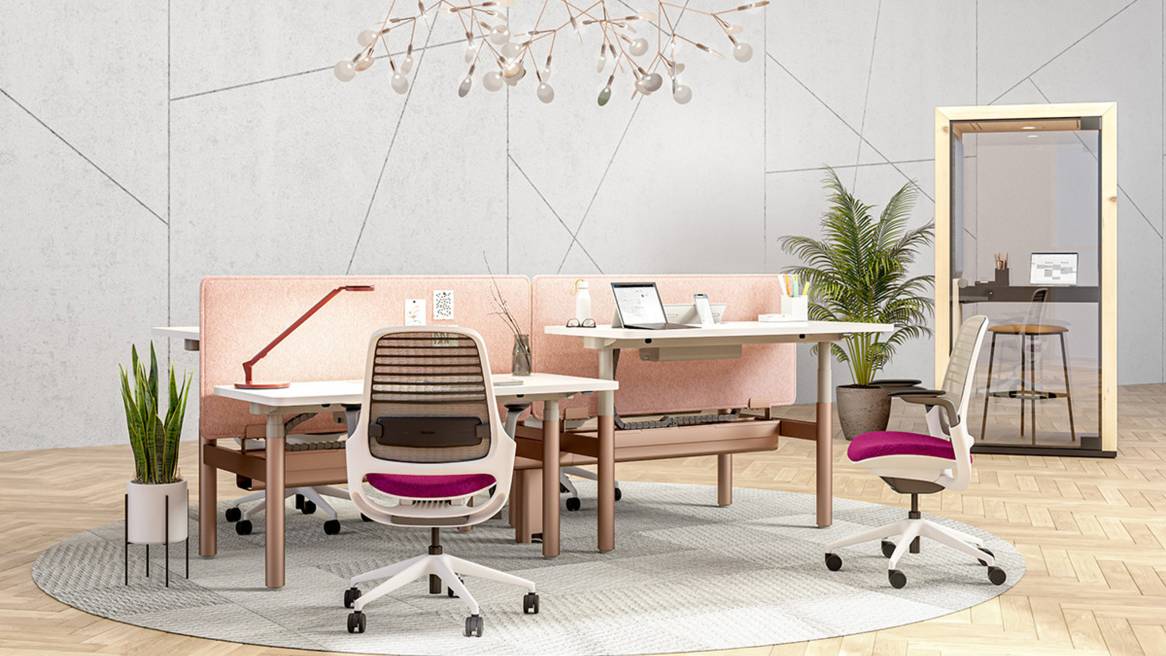Year-Long Study Reinforces Benefits of Standing Desks
The ‘Stand Up to Work’ study finds height-adjustable workstations help productivity, concentration and improve overall health.
A recently-released workplace study found height-adjustable workstations may help reduce sedentary behavior and support health even outside the workplace. “Stand Up to Work: Assessing the Health Impacts of Adjustable Workstations” compared people who work at height-adjustable desks to those with traditional workstations. Over a 12-month period, the study found that height-adjustable desks are linked to increased productivity, better concentration and improved overall health.
“What makes this study different from any other standing-desk study—which is also what made it worthy of peer review and publication—is the combination of its long duration and its inclusion of complementary qualitative data,” says lead researcher Dr. Elizabeth Garland, associate professor at the Icahn School of Medicine at Mount Sinai. “Most studies conclude after just a few months. Ours lasted a full year. This allowed us to assess both the objective and subjective health impacts of standing-desk usage, from perceived stress and wellbeing to measurable changes in sedentary behavior.”
Garland collaborated with a multidisciplinary team of researchers from the Center for Active Design (CfAD), global architecture and design firm Perkins+Will, and Steelcase to carry out the study. Perkins+Will and Steelcase both serve as advisory board members and are designated Champions of Fitwel, a healthy building certification operated by CfAD. Funded by the American Society of Interior Designers (ASID) Foundation’s Transform grant, study results are published in the International Journal of Workplace Health Management (IJWHM).
KEY FINDINGS
Reducing Sitting
People who received height-adjustable desks reported a 17 percent reduction in sitting three months into the study, a trend that remained at the one year mark.
Feeling Better
People (47%) with height-adjustable desks reported a significant reduction in upper back, shoulder or neck discomfort.
Easy to Use
People (88%) with height-adjustable desks reported they were convenient to use after 12 months.
Increasing Productivity
People (65%) with height-adjustable desks reported increased productivity after one year and also reported better concentration ability. In addition, they said they were more active, refreshed, awake, limber and energetic
Improvements Outside of Work
People (65%) said height-adjustable workstations positively impacted their health outside of the workplace.
“As the operator of the Fitwel Certification System, we see the continuous demand for research and data to support and drive the implementation of healthy design strategies,” says Abbie Watts, senior researcher at the Center for Active Design, “The ‘Stand Up to Work’ study is an important piece of research that grounds our workplace initiatives and contributes to the larger body of research that supports how we make the connection between health and the design of the built environment.”

“The health of any organization is dependent on the wellbeing of its most important asset – its employees,” says Lynne Sullivan, director, Steelcase Wellbeing consulting. “This study proves that adjustable workstations are an essential part of a workplace that considers the physical, cognitive and emotional wellbeing of its people.” Giving people the option for movement throughout their day, provides them with choice and control over their workspace — improving wellbeing and engagement.
This most recent study adds to a body of research which Steelcase previously synthesized to identify dimensions of wellbeing that can be impacted by the design of the physical environment, you can read more about this on Wellbeing: A Bottom Line Issue.
One of those dimensions is cultivating vitality in the workplace. Creating the right type of environment can boost people’s motivation and performance within a relatively short time. Design considerations from Steelcase include:
- Design areas that give people choices for controlling the level of sensory stimulation around them.
- Provide easily-adjustable furniture, such as height-adjustable desks, to fit a range of sizes, needs and preferences and to promote movement throughout the day.
- Include cafés with healthy food choices and displays.
Bring nature in with daylight, views, ventilation, patios, etc.
Support active, healthy lifestyles with centrally located stairways, outdoor walking paths, bicycle racks, etc.
Focusing on physical wellbeing is one critical part of designing workplaces that help people move, think and feel better. Research such as “Stand Up to Work” continues to demonstrate that height-adjustable desks can be an important part of a strategy to design for the holistic wellbeing of people.
“As a research-driven design firm that’s committed to health, wellbeing and sustainability, ‘Stand Up to Work’ was a particularly important project for us,” says John Haymaker, director of research at Perkins+Will. “The results validate many of our workplace design decisions, and provide the concrete proof points that data-driven clients are looking for when choosing design solutions.”
The published “Stand Up to Work” study is available to download now. An executive summary, including a review of the methodology and implications derived from the research, is available now as well.


